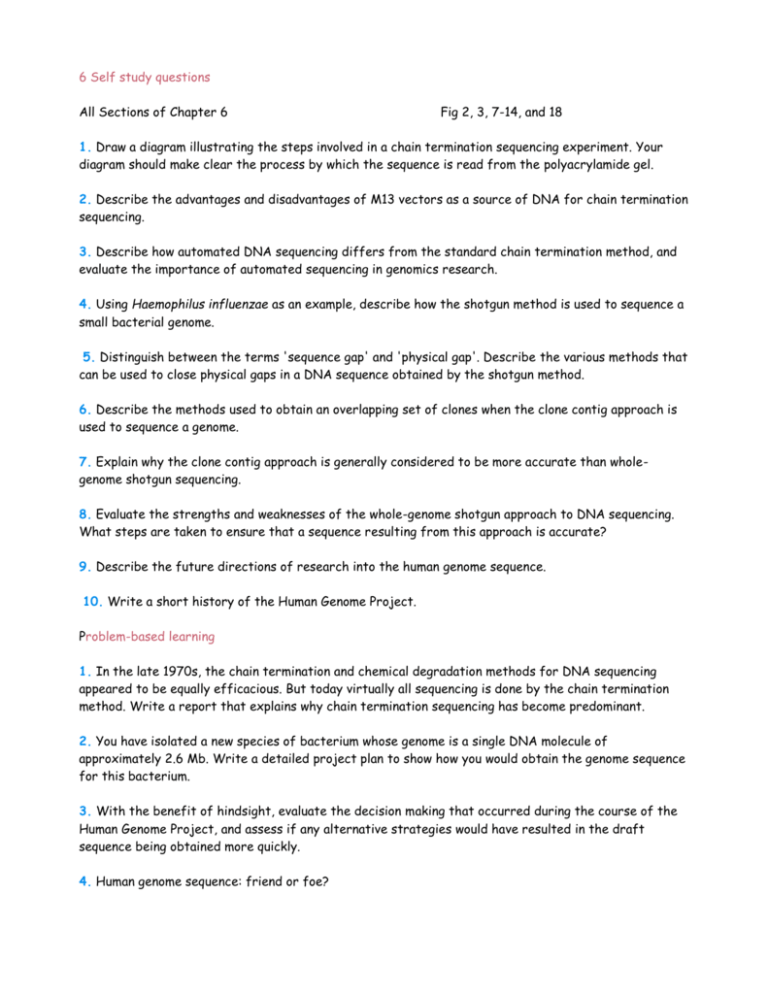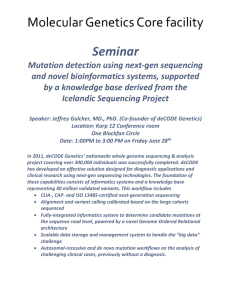BI475 Ch6 SQs
advertisement

6 Self study questions All Sections of Chapter 6 Fig 2, 3, 7-14, and 18 1. Draw a diagram illustrating the steps involved in a chain termination sequencing experiment. Your diagram should make clear the process by which the sequence is read from the polyacrylamide gel. 2. Describe the advantages and disadvantages of M13 vectors as a source of DNA for chain termination sequencing. 3. Describe how automated DNA sequencing differs from the standard chain termination method, and evaluate the importance of automated sequencing in genomics research. 4. Using Haemophilus influenzae as an example, describe how the shotgun method is used to sequence a small bacterial genome. 5. Distinguish between the terms 'sequence gap' and 'physical gap'. Describe the various methods that can be used to close physical gaps in a DNA sequence obtained by the shotgun method. 6. Describe the methods used to obtain an overlapping set of clones when the clone contig approach is used to sequence a genome. 7. Explain why the clone contig approach is generally considered to be more accurate than wholegenome shotgun sequencing. 8. Evaluate the strengths and weaknesses of the whole-genome shotgun approach to DNA sequencing. What steps are taken to ensure that a sequence resulting from this approach is accurate? 9. Describe the future directions of research into the human genome sequence. 10. Write a short history of the Human Genome Project. Problem-based learning 1. In the late 1970s, the chain termination and chemical degradation methods for DNA sequencing appeared to be equally efficacious. But today virtually all sequencing is done by the chain termination method. Write a report that explains why chain termination sequencing has become predominant. 2. You have isolated a new species of bacterium whose genome is a single DNA molecule of approximately 2.6 Mb. Write a detailed project plan to show how you would obtain the genome sequence for this bacterium. 3. With the benefit of hindsight, evaluate the decision making that occurred during the course of the Human Genome Project, and assess if any alternative strategies would have resulted in the draft sequence being obtained more quickly. 4. Human genome sequence: friend or foe?











